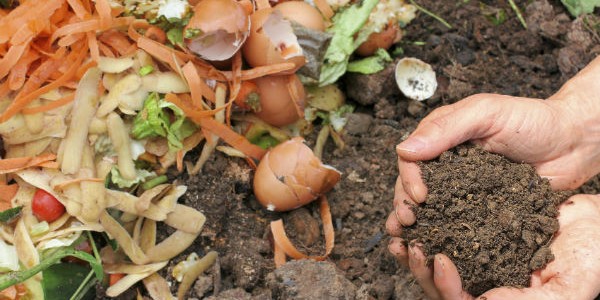Every house with a garden or a backyard should have its own compost pile. Why? Because organic materials make up 30 percent of what we throw away. If you compost them, we turn them into precious nutrients for your plants and vegetables. If you don’t, then they end up as trash and take up space in landfills, where they also release greenhouse gases.
Basically, composting is an essential way to reduce your carbon footprint significantly. Not only does it reduce methane emissions from landfills, it also enriches your soil, to help your plants grow stronger. You will need to use less chemical fertilizers (or none at all), and, since it suppresses plant diseases and pests, you will use less pesticides as well. So why isn’t everyone composting yet?
It’s not difficult to start your own compost pile at home. You already have all the ingredients, you just have to create a new routine, instead of throwing them away, you add them to your compost pile. Compost has three basic ingredients: Browns, which include branches, twigs and dead leaves. Greens, which include vegetable waste, fruit scraps, coffee grounds and grass clippings. And water, that will help break down the other materials and turn them into compost.
The first step is to select a dry, shady spot for your pile or bin. If you don’t have space outside, you can use an indoor compost bin that you can find in any hardware store. Don’t worry, a properly-made compost pile will not smell nor attract pests. If you decide to do an outdoor pile, place it on bare ground, so worms and other organisms can enter your pile and help it along.
The second step is to add to the pile. Try to keep an equal ratio of green and brown ingredients, and make sure your pile is always damp. However, keep in mind that there are ingredients you should never compost, such as oils, meat products, milk, eggs, manure from meat-eating animals and plant clippings that have been treated with chemicals or diseased.
Once you have your compost pile going, you’ll want to keep it covered to retain moisture. You should also turn the material every too weeks at least, to help speed up the decomposing process. Use a pitchfork, a shovel or any tool you think will help, and mix and invert your pile. If you consider it seems a little bit dry, you can spray it a bit with a hose as you are turning it, to keep your pile moist. When the material at the bottom is dark and rich in color, with a texture similar to soil, then it will be ready to use. The time it takes depends on the size of your pile and the materials you add but it usually takes from a couple of weeks to months.

